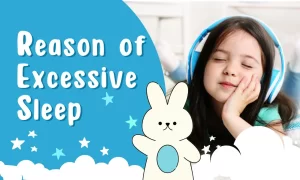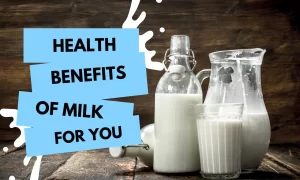Unlocking the grip of addiction can be a challenging journey, especially when it comes to something as general and accessible as pornography. With its easy availability via the internet, porn addiction has become a growing concern in today’s digital age. Whether you’re personally wrestling with this issue or seeking knowledge to support someone you care about, understanding the symptoms of porn addiction is vital. In this blog post, we’ll delve into the symptoms of porn addiction, explore its underlying causes, discuss treatment options available, and offer guidance on how to provide support during this sensitive time. So, let’s shed light on an often misunderstood topic and empower ourselves with knowledge for a path toward healing!
Understanding Porn Addiction
Porn addiction is a complex issue that goes beyond mere fulfillment in explicit content. It involves an unhealthy compulsion to consume pornography, often leading to negative consequences in various aspects of life. While it may be tempting to dismiss porn addiction as just a bad habit, it’s essential to recognize it as a genuine psychological and behavioural disorder.
At its core, porn addiction is characterized by the inability to control one’s consumption of sexually explicit material. Individuals with this addiction find themselves continually seeking out pornography, spending excessive amounts of time viewing it, and experiencing intense cravings when trying to abstain.
It’s crucial to understand that porn addiction can affect anyone regardless of age or gender. It isn’t limited solely to men; women can also struggle with this issue. Additionally, the accessibility and anonymity offered by the internet have made pornography more readily available than ever before, increasing the problem for many individuals.
One key aspect of understanding porn addiction is recognizing how it hijacks the brain’s reward system. When someone watches pornography repeatedly over time, their brain releases dopamine—a neurotransmitter associated with pleasure—as a response. This flood of dopamine creates feelings of euphoria and reinforces the behavior, making them crave more stimulation from increasingly graphic or extreme forms of pornography.
In addition to its impact on neurochemistry and behavior patterns, porn addiction can take a toll on mental health and relationships too. Often go with feelings of guilt, shame, anxiety or depression—porn addiction can lead individuals down a path towards isolation and strained connections with loved ones.
By gaining a deeper understanding of what drives porn addiction at both psychological and physiological levels which we will explore further in subsequent sections—we can begin addressing these issues head-on rather than condemn those who are struggling.
Signs and Symptoms of Porn Addiction
Recognizing the signs and symptoms of porn addiction is crucial to provide support and intervention for those struggling with this issue. While everyone’s experience may vary, there are common indicators that can suggest a person has developed an addiction to pornography.
1. Increased Consumption: One of the primary red flags is when an individual starts spending excessive amounts of time watching pornography. They may find it difficult to control or stop their viewing habits, leading to neglecting other responsibilities or activities.
2. Escalating Tolerance: Over time, someone addicted to porn might require more explicit content or longer durations to achieve the same level of satisfaction as before. This tolerance build-up can lead them down a dangerous path where they seek out increasingly extreme material.
3. Withdrawal Symptoms: Like any addiction, withdrawal symptoms may manifest when attempting to abstain from porn consumption. These can include irritability, restlessness, insomnia, mood swings, anxiety, and intense cravings for sexual stimulation through pornography.
4. Neglecting Relationships & Priorities: Another telltale sign is when someone begins prioritizing their porn use over personal relationships and responsibilities such as work or education. They may isolate themselves socially due to the shame or guilt associated with their habit.
5. Emotional Distress: Those struggling with porn addiction often experience emotional distress, such as feelings of guilt, shame, low self-esteem, and depression related directly to their excessive consumption patterns.
6. Hindered Sexual Functioning: Paradoxically enough, given its focus on sex-related content, porn addiction can negatively affect one’s sexual functioning outside the virtual realm.
This could translate into difficulties achieving arousal without visual stimuli, resulting in erectile dysfunction, lacklustre performance, and diminished interest in real-life sexual encounters.
It’s essential to be aware of these signs and approach individuals dealing with this issue compassionately rather than resorting to judgment or stigmatization.
Through understanding and support, we can help those struggling with porn addiction on the path to recovery.
Negative Effects of Porn Addiction
Porn addiction can have a significant impact on an individual’s life, affecting various aspects such as relationships, mental health, and overall well-being. The negative effects of porn addiction can be both immediate and long-term.
One significant consequence of porn addiction is the strain it puts on personal relationships. Excessive consumption of pornography often leads to decreased intimacy and connection with partners. It may create unrealistic expectations about sex and body image, leading to dissatisfaction in real-life sexual encounters.
Another detrimental effect is the potential for desensitization. Regular exposure to explicit content can numb an individual’s response to normal levels of arousal or excitement. This can lead to difficulties experiencing pleasure in real-life situations or needing increasingly extreme forms of pornography to achieve satisfaction.
Additionally, porn addiction has been linked to feelings of shame, guilt, and low self-esteem. Many individuals who struggle with this addiction experience intense feelings of remorse after viewing explicit content but find themselves trapped in a cycle that preserves these negative emotions.
Mental health issues are also prevalent among those dealing with porn addiction. Depression, anxiety disorders, social isolation, and even suicidal thoughts may emerge as individuals grapple with their compulsive behaviour and its consequences.
Furthermore, productivity and motivation often suffer due to excessive pornography use. Individuals may find it challenging to focus on work or academic responsibilities when preoccupied with seeking out explicit material or engaging in addictive behaviours surrounding it.
Overall, the negative effects of porn addiction extend beyond the screen, impacting relationships, self-image, mental health, and daily functioning. Seeking professional help and support from loved ones can be crucial steps towards recovery.
It is essential for those struggling with this issue to know they are not alone and that there is hope for healing.
Causes of Porn Addiction
The causes of porn addiction can vary from person to person, as a combination of biological, psychological, and social factors influences it. It’s important to understand that addiction is not simply a result of moral weakness or lack of willpower. Here are some potential causes that may contribute to the development of porn addiction.
1. Biological Factors:
Research suggests that specific individuals may be more predisposed to developing addictive behaviours due to genetic factors or imbalances in brain chemistry. Dopamine, a neurotransmitter associated with pleasure and reward, plays a significant role in the development and maintenance of addictions.
2. Psychological Factors:
Underlying mental health issues such as anxiety, depression, low self-esteem, or unresolved trauma can increase vulnerability to porn addiction. Individuals may turn to pornography as a means of escape or a coping mechanism for their emotional struggles.
3. Social Factors:
Environmental influences also play a role in the development of porn addiction. Exposure to explicit content at an early age, peer pressure, dysfunctional relationships, or family dynamics can contribute to the initiation and reinforcement of addictive behaviours.
4. Accessibility and Technology:
The easy access to high-speed internet and advancements in technology have made pornography readily available on various platforms like smartphones and tablets. The anonymous nature of online browsing can intensify compulsive behaviour patterns.
5. Cultural Attitudes Towards Sexuality:
Societal attitudes towards sex influence our perceptions about pornography use, which can either normalize it or create feelings of shame around it.
The stigma surrounding discussions related to sexual issues often prevents people from seeking help when they develop problematic patterns with pornography consumption.
It’s essential not only for individuals struggling with porn addiction but also for society as whole to recognize these underlying causes and work toward creating awareness, reducing stigma, and providing appropriate support mechanisms for those affected by this issue.
Treatment Options for Porn Addiction
When it comes to addressing porn addiction, there are several treatment options available that can help individuals on their path to recovery. It’s important to remember that each person may respond differently to various approaches, so finding the right combination of treatments is critical.
One common approach is therapy, which can be conducted individually or in groups. Therapy provides a safe and non-judgmental space for individuals to explore the underlying causes of their addiction and develop healthy coping mechanisms. Cognitive-behavioral therapy (CBT) has shown promising results in helping individuals challenge and change negative thought patterns associated with porn addiction.
Another treatment option is support groups, such as Sex Addicts Anonymous (SAA) or Porn Addicts Anonymous (PAA). These groups offer a supportive community where individuals can share their experiences, receive encouragement from others who have gone through similar struggles and learn effective strategies for overcoming cravings and triggers.
In some cases, medication may be prescribed by a healthcare professional to address co-occurring mental health conditions like anxiety or depression that often accompany porn addiction. Medication alone is not considered a standalone treatment but can be part of a comprehensive plan.
Additionally, lifestyle changes play an essential role in recovery. This includes creating structure in daily routines, engaging in physical activities or hobbies that provide fulfillment and distraction from urges, and practicing self-care techniques such as mindfulness meditation or relaxation exercises.
It’s essential for anyone struggling with porn addiction to seek professional help from qualified therapists or counsellors specializing in sexual addictions. Treatment plans should be tailored according to individual needs and circumstances while considering any underlying factors contributing to addictive behaviors.
Remember that recovery takes time and effort; it’s not an overnight process. Seek appropriate treatment options and build a strong support network around yourself. Individuals will increase their chances of achieving long-term success on the journey towards healing.















